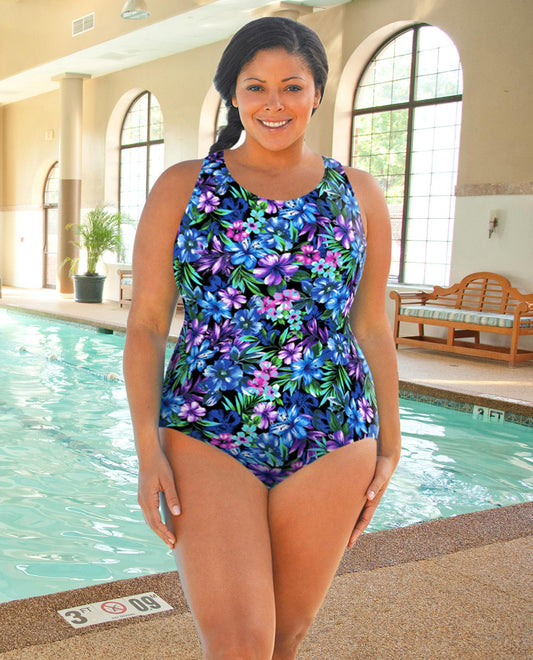WHAT’S SO GREAT ABOUT A CHLORINE RESISTANT SWIMSUIT?
Well, if you’ve started a water fitness class, like water aerobics, in a conventional spandex swimsuit, you probably know how quickly that swimsuit bit the dust. Literally, chlorine eats away at spandex and Lycra® found in conventional swimwear, making the swimsuit disintegrate before your eyes. We can attest that there is nothing worse than having your friend point out to you that your swimsuit has become see-through, unbeknownst to you, in the middle of class. For this reason, we recommend chlorine resistant swimsuits for anyone spending more time than the occasional swim in a chlorinated pool.


IS YOUR SWIMSUIT CHLORINE RESISTANT?
You may be thinking, “Okay, Great. So, how can I tell if a swimsuit is chlorine resistant? This is quite easy actually. Polyester and PBT, or polybutylene terephthalate, have excellent stretch and elasticity. Additionally, PBT is also quick-drying and has low-water absorbency. These are both chlorine resistant materials. The more polyester and/or PBT found in a swimsuit and less spandex/Lycra® found, the more chlorine resistant the swimsuit is. This does not mean that a polyester/spandex blend swimsuit is not chlorine resistant. It’s true that a blend like that, depending on the amount of spandex, will degrade over time, but will still last longer than an all spandex/Lycra® swimsuit.
Keep in mind that with a conventional swimsuit, spandex/Lycra® only typically lasts 4-6 weeks with exposure to chlorine a couple of times a week. This is why finding the rightchlorine resistant swimsuitis so important if you take water fitness classes regularly! Now, just because a swimsuit is chlorine resistant, it doesn’t mean that it has to be boring, unflattering, or lacking in fashion. In fact there are many different styles of chlorine resistant swimsuits designed to meet varying water fitness needs.


For example, if you are taking water aerobics classes, you plan to do a lot of jumping, twisting, water running, and a wide variety of arm movements. Perhaps a racer backs, active back, keyhole, and pretty much any other athletic back design out there, work better for water aerobics activities.


All of these back designs are available in chlorine resistant polyester, PBT, or a polyester/spandex blend. Whereas, if you are taking a water stretching class, where movements are slower, you may want a high scoop back chlorine resistant swimsuit for comfort.
Many of the swimsuits described above are offered in beautiful prints, colors, and textures! As the brands you have grown to love, like Krinkle® and Dolfin® embrace the world of water fitness, the gaps between boring water exercise gear and fashionable swimsuits diminish. If you’d like to learn more on how to keep your swimsuit looking new, check out our 10 Tips To Make Your Swimsuit Last Longer.
























